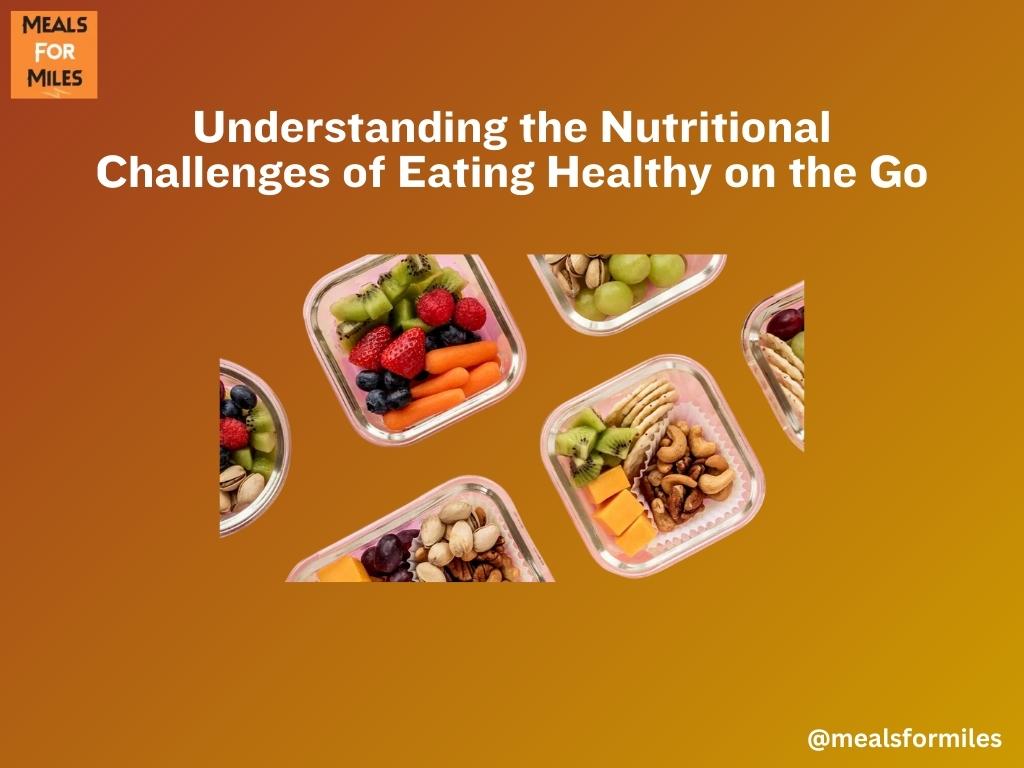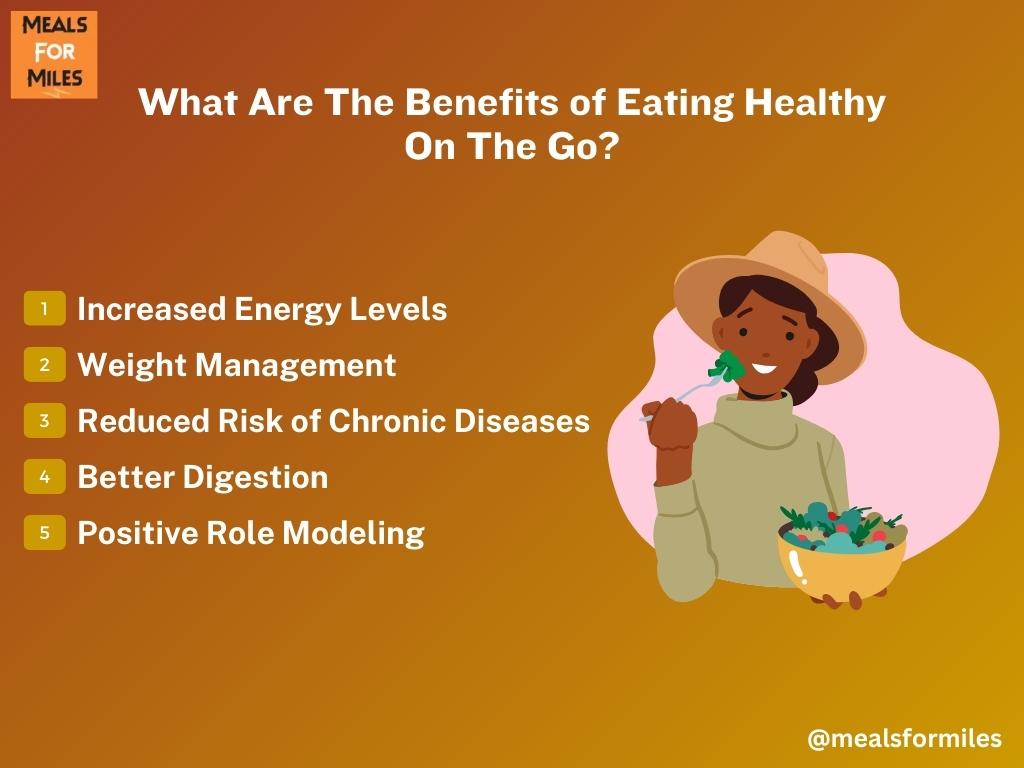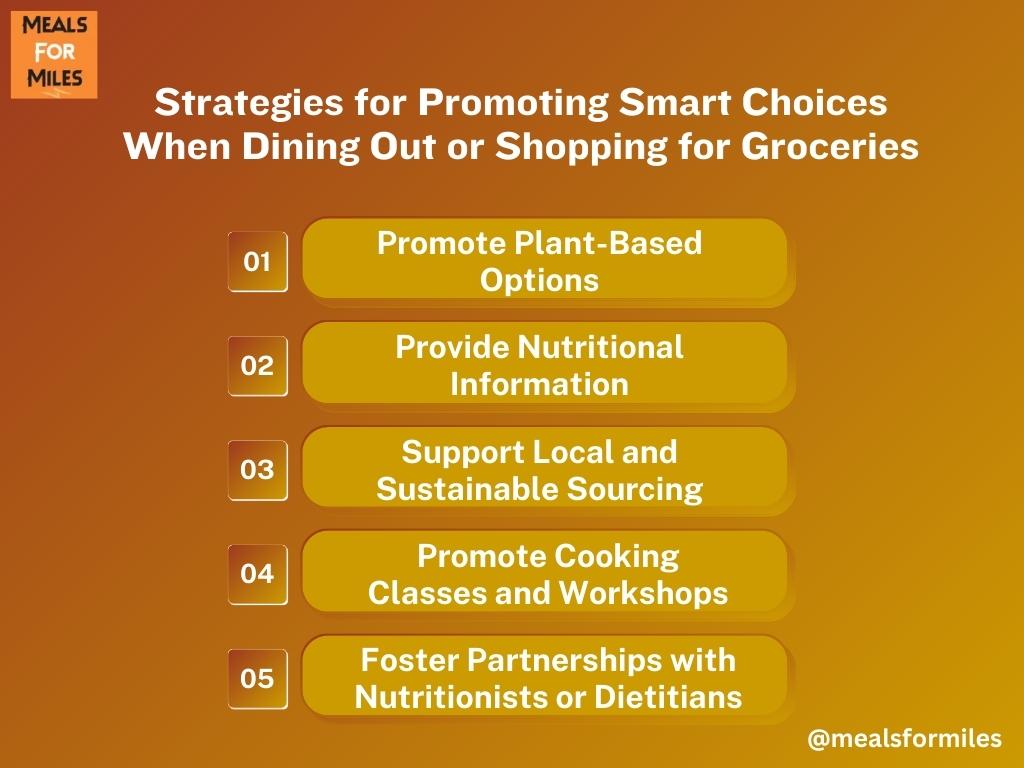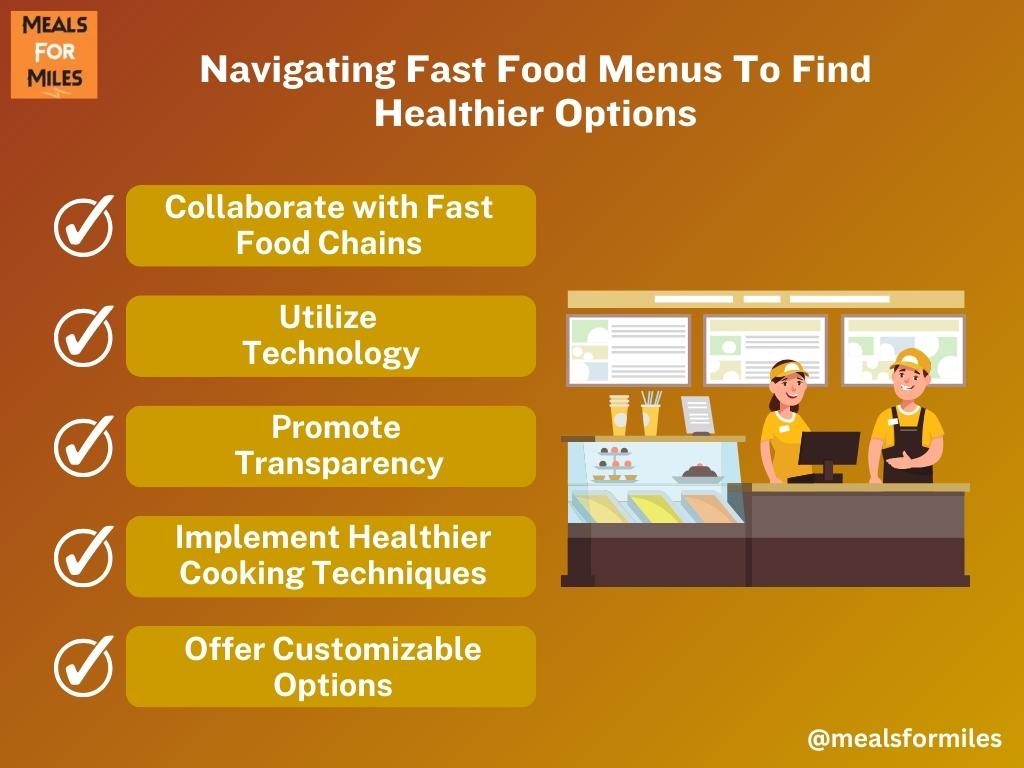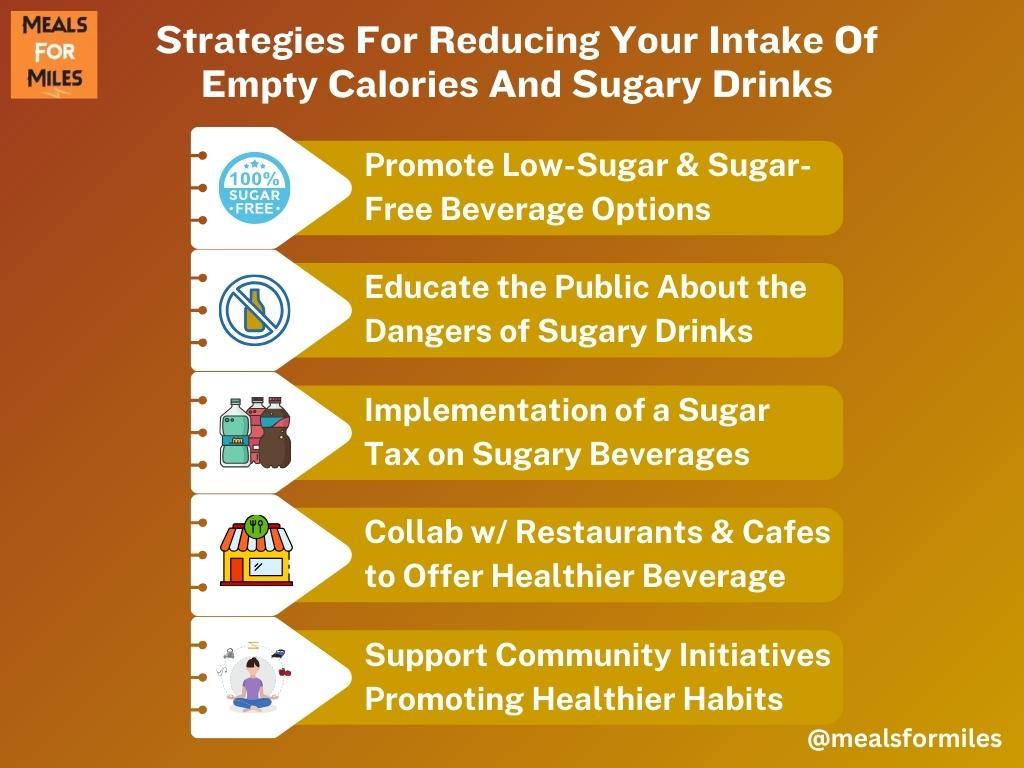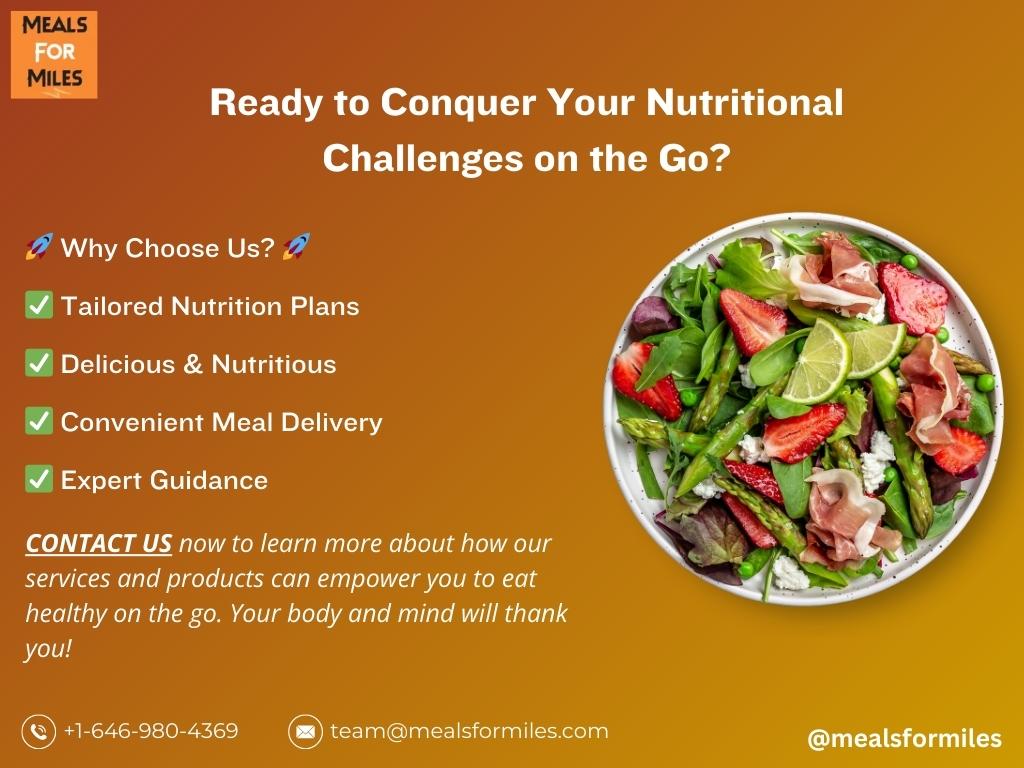Ready to take control of your nutrition and make healthier choices on the go?
Look no further! Our services and products are here to support you on your journey towards a healthier lifestyle. Whether you need guidance on meal planning, access to nutritious snacks, or tools to help you navigate food labels, we have you covered.
In today’s fast-paced world, eating healthily while on the go presents numerous challenges. This article explores the benefits of maintaining a nutritious diet in such circumstances, offering tips for planning ahead, making smart choices when dining out or shopping, reading food labels, navigating fast food menus, and identifying unhealthy ingredients to avoid.
It also provides strategies for reducing empty calorie and sugary drink intake and offers suggestions for packing balanced meals and snacks during long-distance travel. Ultimately, taking control of one’s nutrition and making healthier choices is crucial for overall well-being and a fulfilling life.
Table of Contents
- Introduction to the Nutritional Challenges of Eating Healthy on the Go
- What Are The Benefits of Eating Healthy On The Go?
- Tips For Planning Ahead When Eating Healthy On The Go
- How To Make Smart Choices When Dining Out Or Shopping For Groceries
- Understanding How To Read Food Labels When Shopping For Groceries
- Navigating Fast Food Menus To Find Healthier Options
- Identifying Unhealthy Ingredients To Avoid In Processed Foods
- Strategies For Reducing Your Intake Of Empty Calories And Sugary Drinks
- Tips For Packing Balanced Meals And Snacks While Traveling Long Distance
- Final Thoughts: Taking Control Of Your Nutrition And Making Healthier Choices
Introduction to the Nutritional Challenges of Eating Healthy on the Go
Eating healthy on the go has become increasingly difficult in today’s world. With busy lives, long commutes, and ever-increasing work hours, it can be hard to find time to prepare and cook nutritious meals. This is especially true for those who are always traveling or on the go. Eating healthy while out and about can present a number of challenges, including limited access to fresh ingredients, limited availability of healthful options in restaurants or fast food outlets, difficulty navigating food labels when shopping for groceries, and difficulty preparing balanced meals while traveling long distances. Despite these challenges, there are still ways to make smart choices when eating out or shopping for groceries that will ensure you’re getting all the nutrition your body needs.
What Are The Benefits of Eating Healthy On The Go?
Eating healthy on the go has several benefits for both physical and mental wellbeing. A diet rich in fruits, vegetables, whole grains, and lean proteins provides essential vitamins, minerals, and energy to keep you going throughout the day. Making healthier food choices can also reduce cholesterol levels and prevent weight gain from unhealthy fats and sugars found in processed foods. Consuming calcium-rich meals promotes strong bones, while a high fiber intake ensures smooth digestion even on busy days.
- Convenience: Eating healthy on the go allows individuals to maintain a nutritious diet even when they have a busy schedule. With the availability of healthy options such as pre-packaged salads, fruit cups, and protein bars, it becomes easier to make healthier choices even when time is limited.
- Increased Energy Levels: A balanced diet that includes fruits, vegetables, whole grains, and lean proteins provides the necessary nutrients to fuel the body. This can lead to increased energy levels, better concentration, and improved productivity throughout the day, making it easier to stay focused and perform well in various tasks.
- Weight Management: Opting for healthy food options while on the go can help in weight management. Processed foods often contain excess calories, unhealthy fats, and added sugars that can contribute to weight gain. By choosing healthier alternatives, individuals can control their calorie intake and reduce the risk of obesity and related health issues.
- Improved Mood and Mental Health: A diet rich in essential nutrients can have a positive impact on mental well-being. Certain foods, such as those high in omega-3 fatty acids (found in fish and nuts), have been linked to improved brain function and reduced risk of depression and anxiety. Additionally, a healthy diet can enhance overall mood and provide a sense of well-being.
- Reduced Risk of Chronic Diseases: Eating healthy on the go can help prevent the development of chronic diseases. Nutrient-dense foods, like fruits and vegetables, are rich in antioxidants that protect against cell damage and inflammation, reducing the risk of conditions such as heart disease, diabetes, and certain types of cancer.
- Better Digestion: A high-fiber diet, commonly found in whole grains, fruits, and vegetables, promotes regular bowel movements and helps maintain a healthy digestive system. This can alleviate digestive issues such as constipation, bloating, and discomfort, allowing individuals to feel more comfortable and focused throughout the day.
- Stronger Immune System: A healthy diet can boost the immune system, helping the body fight off infections and illnesses. Nutrient-rich foods, like citrus fruits, berries, and leafy greens, contain vitamins and minerals that support immune function and promote overall health.
- Long-Term Health Benefits: Eating healthy on the go is not only beneficial in the short term but also contributes to long-term health. By consistently making healthier food choices, individuals can reduce their risk of developing chronic diseases, maintain a healthy weight, and enhance overall quality of life as they age.
- Improved Sleep Quality: A diet filled with nutritious foods can positively impact sleep quality. Certain foods, such as complex carbohydrates found in whole grains, can help regulate serotonin levels, promoting better sleep. Additionally, a balanced diet can prevent discomfort and digestive issues that may disrupt sleep patterns.
- Positive Role Modeling: Opting for healthy food choices while on the go can inspire others to do the same. By demonstrating that it is possible to prioritize nutrition even in a busy lifestyle, individuals can influence their family, friends, and colleagues to make healthier choices as well, fostering a culture of wellness.
Tips For Planning Ahead When Eating Healthy On The Go
To meet nutritional needs while living an active lifestyle, it is important to plan ahead. Packing snacks like nuts, fruit, yogurt, and vegetable sticks can be helpful when access to meals is limited. Preparing meals in advance, such as sandwiches or salads, with nutrient-dense ingredients can also be beneficial. Having protein-packed snacks like jerky bites readily available is useful for unexpected hunger. Although these strategies require preparation, prioritizing nutrition over processed convenience foods can have significant long-term health benefits.
- Meal Prepping Services: Develop and promote meal prepping services specifically tailored for individuals with active lifestyles. These services could offer customized meal plans, including nutrient-dense ingredients, to meet specific dietary needs and preferences. This would save time and effort for busy individuals while ensuring they have access to healthy meals on the go.
- Healthy Vending Machines: Collaborate with vending machine companies to offer healthier snack options in locations where access to nutritious meals is limited. These vending machines could be stocked with a variety of protein-packed snacks, fruits, vegetables, and yogurt cups, providing a convenient and accessible option for those in need of quick, healthy food options.
- Mobile Food Trucks: Establish mobile food trucks specializing in nutritious and balanced meals for individuals who are constantly on the go. These trucks could offer a range of freshly prepared salads, sandwiches, smoothies, and other healthy options, catering to different dietary preferences. Strategically position these trucks in areas with high foot traffic or near fitness centers to provide a convenient and nutritious alternative to fast food.
- Nutritional App or Website: Develop a comprehensive app or website that offers meal planning tips, recipes, and nutritional advice specifically targeting those with active lifestyles. This platform could include features such as personalized meal plans, grocery lists, and even delivery services for pre-prepared meals or ingredients. By providing a one-stop-shop for all their nutritional needs, individuals can easily plan ahead and make healthier choices.
- Collaboration with Fitness Influencers or Trainers: Partner with fitness influencers or trainers to promote the importance of planning ahead when eating healthy on the go. These collaborations could include creating informative content, hosting workshops or webinars, or even developing joint products or services that cater to the nutritional needs of active individuals.
- Healthy Snack Subscription Boxes: Launch a subscription-based service that delivers a curated selection of healthy snacks to subscribers’ doorsteps on a regular basis. These boxes could include a variety of portable snacks like nuts, dried fruits, protein bars, and jerky bites, ensuring individuals always have access to nutritious options wherever they go.
- Workplace Wellness Programs: Partner with corporations to implement workplace wellness programs that focus on healthy eating habits and planning ahead. These programs could involve educational sessions, cooking demonstrations, or even access to healthy meal options in workplace cafeterias or vending machines.
- Collaboration with Fitness Tracking Devices: Integrate with popular fitness tracking devices, such as fitness bands or smartwatches, to provide individuals with real-time nutritional guidance based on their activity levels and goals. This could include personalized recommendations for healthy snacks or meal options, tracking water intake, or even sending reminders to plan ahead when access to meals might be limited.
Overall, the key is to make healthy eating on the go as convenient and accessible as possible, while also educating individuals about the long-term benefits of prioritizing nutrition over processed convenience foods.
How To Make Smart Choices When Dining Out Or Shopping For Groceries
When dining out or shopping for groceries, making smart choices involves finding a balance between indulgence and moderation. To do this, it is important to research options beforehand and know one’s individual nutritional needs and goals. When dining out, opting for healthier menu items like grilled chicken salads instead of fried ones with heavy sauces can be a good choice.
Choosing side dishes high in fiber, like beans instead of starchy potatoes, can help fill up without consuming excessive calories. When grocery shopping, looking for products labeled ‘low fat’, ‘low sodium’, ‘no sugar added’, ‘organic’, and ‘non-GMO’ can indicate better nutrition value. It is also important to read food labels carefully to identify hidden sources of sugar in seemingly healthy options.
Here are the 10 Strategies for Promoting Smart Choices When Dining Out or Shopping for Groceries:
- Promote Plant-Based Options: Encourage restaurants to offer more plant-based menu items to cater to the growing number of consumers seeking healthier and sustainable choices. This could include plant-based protein alternatives, such as tofu or tempeh, as well as a variety of fruits, vegetables, and whole grains.
- Provide Nutritional Information: Advocate for restaurants and grocery stores to provide detailed nutritional information for their menu items and products. This can help consumers make informed choices based on their specific dietary needs, such as those following a low-sodium or low-calorie diet.
- Support Local and Sustainable Sourcing: Encourage restaurants and grocery stores to source locally grown and sustainable ingredients. This not only promotes healthier choices but also supports local farmers and helps reduce the carbon footprint associated with long-distance transportation.
- Educate Consumers on Portion Control: Offer resources and tips to help consumers understand proper portion sizes and encourage restaurants to offer smaller portion options. This can help individuals maintain a balanced diet and prevent overeating.
- Encourage Menu Customization: Advocate for restaurants to offer customizable menu options that allow customers to choose healthier ingredients or modify dishes to meet their dietary needs. This could include options like substituting whole-grain bread for white bread or opting for a side salad instead of fries.
- Promote Cooking Classes and Workshops: Collaborate with local community centers or cooking schools to offer classes or workshops on healthy cooking and meal planning. This can empower individuals to make smarter choices when dining out or grocery shopping by teaching them how to prepare nutritious meals at home.
- Foster Partnerships with Nutritionists or Dietitians: Collaborate with professionals in the field of nutrition to provide guidance and support for consumers. This could involve hosting workshops or consultations in grocery stores or partnering with restaurants to develop healthier menu options with the help of experts.
- Develop a Food Rating System: Create a standardized rating system that assesses the nutritional value of menu items or grocery products. This can help consumers quickly identify healthier choices and make informed decisions.
- Offer Loyalty Programs or Incentives for Healthy Choices: Encourage restaurants and grocery stores to implement loyalty programs that reward customers for making healthier choices. This could include discounts on healthier menu items or exclusive offers on nutritious products.
- Embrace Technology: Develop mobile applications or online platforms that provide personalized recommendations based on individual dietary preferences and goals. These platforms could suggest healthier menu options or provide grocery shopping lists tailored to specific nutritional needs.
Understanding How To Read Food Labels When Shopping For Groceries
Understanding how to read food labels is important in order to know what ingredients are in the product. This includes being familiar with terms such as serving size, calories per serving, trans fats, saturated fats, dietary fiber, sodium, and cholesterol. By understanding these terms, we can compare different products and choose the one that best meets our nutritional needs.
The % daily value column on food labels also helps us understand how much of certain nutrients, like vitamin C, calcium, and iron, are included in the product compared to the recommended daily intake for our age, gender, and activity level. This information is helpful when making decisions about which products to buy.
Here are the 10 Strategies for Promoting Food Label Literacy and Consumer Education:
- Develop Educational Programs for Consumers: As an industry expert, you could work with grocery stores, health organizations, or schools to develop educational programs that teach consumers how to read food labels effectively. This could include workshops, online courses, or informational pamphlets.
- Create a Mobile App: Develop a mobile app that allows users to scan food labels and provides them with detailed information about the ingredients, nutritional content, and recommended daily intake. This app could also suggest healthier alternatives based on the user’s dietary preferences.
- Collaborate with Food Manufacturers: Work with food manufacturers to ensure that their product labels are clear, concise, and easy to understand for consumers. As an industry expert, you can provide guidance on how to present nutritional information in a way that is visually appealing and informative.
- Advocate for Standardized Labeling: Push for standardized food labeling regulations that make it easier for consumers to compare products. This could include advocating for clearer and more consistent formatting, highlighting key nutritional values, and making serving sizes more realistic.
- Conduct Research on Consumer Behavior: As an industry expert, you could conduct research to understand how consumers interpret and use food labels. This could involve surveys, focus groups, or observational studies to gain insights into common misconceptions or difficulties faced by consumers when reading food labels.
- Offer Consulting Services: As an industry expert, you could offer consulting services to food manufacturers, retailers, or health organizations. This could involve reviewing and improving their product labels, providing guidance on compliance with labeling regulations, or conducting training sessions for their employees.
- Collaborate with Dieticians and Nutritionists: Partner with dieticians and nutritionists to provide comprehensive guidance on reading food labels. This collaboration could involve joint workshops, webinars, or publications that combine the expertise of industry professionals and nutrition experts.
- Develop Online Resources: Create a website or online platform that offers comprehensive resources on how to read food labels. This could include articles, videos, and interactive tools that help consumers understand and interpret nutritional information on product labels.
- Engage with Social Media Influencers: Collaborate with popular health and wellness influencers who have a strong following on social media platforms. By partnering with these influencers, you can reach a larger audience and promote the importance of reading food labels.
- Lobby for Policy Changes: Use your expertise to advocate for policy changes related to food labeling. This could involve working with government agencies or industry associations to push for regulations that prioritize consumer education and transparency in labeling practices.
Navigating Fast Food Menus To Find Healthier Options
When navigating fast food menus, it can be challenging to find healthier options. However, with a little bit of knowledge and mindfulness, it is possible to make healthier choices. One strategy is to look for items that are grilled or baked rather than fried. These cooking methods typically result in lower fat content.
Additionally, opting for meals that include a variety of vegetables and lean proteins can help make a meal more nutritious. Another helpful tip is to pay attention to portion sizes and avoid supersizing or adding extra sides. Lastly, reading the nutritional information provided by the restaurant can give valuable insight into the calorie, fat, and sodium content of different menu items, allowing you to make more informed decisions.
Here are the 7 Strategies for Promoting Healthier Fast Food Choices:
- Collaborate with Fast Food Chains: Encourage fast food chains to collaborate with nutritionists and health experts to create healthier menu options. This could include introducing more plant-based alternatives, reducing sodium and sugar content, and offering smaller portion sizes. By working together, the industry can provide more nutritious choices to customers.
- Utilize Technology: Develop smartphone apps or online platforms that provide nutritional information and recommendations for healthier fast food options. These platforms can help customers make informed decisions by offering personalized suggestions based on their dietary preferences and health goals.
- Promote Transparency: Encourage fast food chains to be transparent about the nutritional content of their menu items. This can be achieved by prominently displaying calorie, fat, and sodium information on menus or through online platforms. By making this information readily available, customers can easily compare and choose healthier options.
- Implement Healthier Cooking Techniques: Encourage fast food chains to adopt healthier cooking techniques, such as baking or grilling, rather than deep-frying. This can significantly reduce the fat content in popular menu items like chicken nuggets or fries, making them healthier alternatives.
- Offer Customizable Options: Fast food chains can provide customers with the option to customize their meals by choosing specific ingredients or toppings. This allows individuals to create healthier combinations by selecting whole grain buns, adding extra vegetables, or opting for lean proteins.
- Educate Employees: Train fast food employees on nutrition and healthy eating. By educating staff members on the importance of healthier options and providing them with the knowledge to make recommendations, they can guide customers towards more nutritious choices.
- Promote Healthier Marketing Strategies: Encourage fast food chains to promote their healthier menu options through marketing campaigns. By highlighting these choices and showcasing their nutritional benefits, companies can encourage customers to make healthier decisions when dining at fast food restaurants.
Overall, by implementing these ideas, the fast food industry can play a significant role in helping customers navigate menus and find healthier options. It is essential to prioritize collaboration, transparency, and education to promote a healthier dining experience in the fast food industry.
Identifying Unhealthy Ingredients To Avoid In Processed Foods
To avoid unhealthy ingredients in processed foods, it is important to steer clear of added sugars, artificial sweeteners, trans fats, high levels of sodium, and additives such as artificial colors, flavors, and preservatives. These ingredients have been linked to weight gain, obesity, chronic diseases, negative health effects, raised bad cholesterol levels, heart disease, high blood pressure, increased risk of stroke, and adverse effects on overall health. By being aware of these ingredients, individuals can make healthier choices when buying and consuming processed foods.
Here are the 10 Strategies for Promoting Awareness and Avoidance of Unhealthy Ingredients in Processed Foods:
- Implementing Stricter Labeling Regulations: Advocate for clearer and more detailed labeling on processed food products. This would include highlighting the presence of added sugars, artificial sweeteners, trans fats, high sodium levels, and artificial additives. This would help consumers make more informed decisions about the products they are purchasing.
- Educating Consumers About Hidden Unhealthy Ingredients: Work towards educating consumers about the hidden unhealthy ingredients in processed foods. This could be done through public awareness campaigns, educational programs, and collaborations with healthcare professionals to ensure that the general public is well-informed about the potential health risks associated with these ingredients.
- Promoting Natural and Organic Alternatives: Encourage the development and promotion of natural and organic alternatives to processed foods. This could involve supporting and promoting companies that prioritize the use of whole, unprocessed ingredients and avoid the use of unhealthy additives. By highlighting these healthier options, consumers can make more conscious choices when purchasing processed foods.
- Lobbying for Stricter Regulations on Unhealthy Ingredients: Advocate for stricter regulations on the use of unhealthy ingredients in processed foods. This could involve working with government bodies and regulatory agencies to establish guidelines and restrictions on the use of added sugars, artificial sweeteners, trans fats, high sodium levels, and artificial additives. By implementing these regulations, the industry can be forced to reformulate their products to meet healthier standards.
- Collaborating with Food Manufacturers: Engage in partnerships and collaborations with food manufacturers to encourage them to reformulate their products to eliminate or reduce the use of unhealthy ingredients. This could involve providing technical expertise and guidance on alternative ingredients and manufacturing processes that can maintain taste and texture while improving nutritional value.
- Conducting Research on the Health Effects of Processed Foods: Invest in research and studies to further understand the specific health effects of processed foods and the role of unhealthy ingredients. This could involve funding academic research, collaborating with universities and research institutions, and conducting clinical trials to gather scientific evidence. By having a better understanding of the negative health impacts, industry experts can advocate for change more effectively.
- Supporting Policy Changes: Actively support and participate in policy changes that aim to promote healthier food choices. This could involve working with policymakers, legislators, and advocacy groups to push for policies such as taxes on sugary drinks, restrictions on marketing unhealthy foods to children, and public health campaigns promoting healthier eating habits.
- Encouraging Food Industry Transparency: Advocate for increased transparency within the food industry. This could involve urging companies to disclose their ingredient lists, manufacturing processes, and nutritional information in a more accessible and understandable manner. By promoting transparency, consumers can make more informed choices and hold companies accountable for the ingredients they use in their processed foods.
- Collaborating with Healthcare Professionals: Collaborate with healthcare professionals, such as nutritionists and dietitians, to develop educational materials and resources that help individuals identify and avoid unhealthy ingredients in processed foods. This can include creating online resources, hosting workshops, and providing training to healthcare professionals to ensure they have the knowledge and tools to guide their patients towards healthier choices.
- Promoting Home-Cooked Meals and Meal Planning: Advocate for the importance of home-cooked meals and meal planning as a way to avoid unhealthy ingredients in processed foods. This can involve promoting cooking classes, developing meal planning apps, and sharing easy and nutritious recipes that encourage individuals to cook more often and rely less on processed foods.
Strategies For Reducing Your Intake Of Empty Calories And Sugary Drinks
To reduce intake of empty calories and sugary drinks, prioritize water as the main beverage and avoid soda, energy drinks, and fruit juices. Practice portion control when consuming high-calorie snacks, desserts, or processed foods, and choose healthier alternatives like fruits and vegetables. Read nutrition labels to make informed choices and avoid products with added sugars. By incorporating these strategies, you can promote a healthier lifestyle.
Here are the 10 Strategies for Promoting Healthier Beverage Choices and Reducing Sugary Drink Consumption:
- Develop and Promote Low-Sugar and Sugar-Free Beverage Options: Collaborate with beverage manufacturers to develop innovative low-sugar or sugar-free alternatives to sugary drinks. This could include flavored water options, unsweetened tea or coffee, and naturally sweetened beverages using ingredients like stevia or monk fruit.
- Educate the Public About the Dangers of Sugary Drinks: Create educational campaigns that raise awareness about the negative health effects of sugary drinks. Collaborate with health organizations and schools to implement programs that teach children and adults about the risks associated with excessive sugar consumption.
- Implement a Sugar Tax: Advocate for the implementation of a sugar tax on sugary beverages. This could incentivize consumers to reduce their intake by making these drinks more expensive and encourage manufacturers to reduce the sugar content in their products.
- Collaborate with Restaurants and Cafes to Offer Healthier Beverage Options: Work with food service providers to develop partnerships that promote water as the default beverage option instead of sugary drinks. Encourage restaurants and cafes to offer flavored water or infused water as an appealing alternative to soda or other high-sugar beverages.
- Support Community Initiatives Promoting Healthier Habits: Support and sponsor community initiatives that encourage healthier choices. This could include sponsoring sports events, promoting active lifestyles, or partnering with schools to provide healthier beverage options in vending machines and cafeterias.
- Provide Clear and Accurate Nutrition Information: Advocate for clearer and more prominent nutrition labeling on food and beverage products. This will enable consumers to make informed choices and identify products high in added sugars or empty calories.
- Collaborate with Healthcare Providers: Partner with healthcare providers to create educational resources and materials that inform patients about the risks of excessive sugar consumption and provide strategies for reducing intake.
- Engage in Research and Development: Invest in research and development to create innovative, low-sugar or sugar-free alternatives that taste good and appeal to consumers. This could include exploring new ingredients, technologies, or processes that reduce sugar content while maintaining flavor.
- Support Public Health Campaigns: Collaborate with public health organizations to support campaigns that promote reducing the intake of empty calories and sugary drinks. This could involve funding or providing resources for media campaigns, community events, or educational programs.
- Advocate for Stricter Regulations: Advocate for stricter regulations on the marketing and advertising of sugary drinks. Encourage policies that restrict marketing to children, limit the availability of sugary drinks in schools, and require clearer labeling of added sugars.
By implementing these strategies, you can contribute to reducing the intake of empty calores and sugary drinks, ultimately promoting a healthier lifestyle for consumers.
Tips For Packing Balanced Meals And Snacks While Traveling Long Distance
When traveling long distances, it’s important to pack balanced meals and snacks to stay nourished and energized. Include a variety of food groups in your meals, like proteins, carbohydrates, fruits, and vegetables. Pack easy-to-pack options like whole-grain sandwiches with lean meats and fresh veggies. For snacks, bring individual portions of nuts, seeds, or trail mix for protein, healthy fats, and fiber. Stay hydrated by carrying a refillable water bottle and drinking plenty of water. Plan your meals and snacks in advance to avoid unhealthy fast food options. Packing balanced meals and snacks will make your travel experience enjoyable and satisfying.
Here are the 10 Innovative Solutions for Providing Balanced Meals and Snacks to Long-Distance Travelers:
- Pre-packaged Balanced Meal Kits: Partner with food companies to create pre-packaged balanced meal kits specifically designed for long-distance travelers. These kits can include a variety of food groups, portion-controlled servings, and easily transportable packaging.
- Meal Delivery Services: Collaborate with meal delivery services to offer specially curated meal options for travelers. These services can provide customizable menus that cater to specific dietary needs and preferences, ensuring travelers have access to balanced meals even when on the move.
- Travel-Friendly Snack Subscription Boxes: Develop a subscription box service that delivers travel-friendly snacks to customers on a regular basis. These boxes can include a mix of protein bars, dried fruits, nuts, and other nutritious snacks that are easy to pack and offer sustained energy during long journeys.
- Recipe Apps for Travelers: Create a recipe app specifically tailored for travelers, providing them with easy-to-follow recipes for balanced meals and snacks. The app can suggest meal ideas based on ingredients that are readily available in different travel destinations, making it convenient for travelers to prepare nutritious meals wherever they are.
- In-Flight Meal Options: Collaborate with airlines to enhance the quality of in-flight meals. Offer healthy, balanced meal options that include a variety of food groups and cater to different dietary needs. This can help travelers maintain their energy levels and overall well-being during long flights.
- Food Vending Machines at Transportation Hubs: Install food vending machines at airports, train stations, and bus terminals that offer a range of nutritious and balanced meal options. These machines can provide travelers with convenient access to healthy food choices, ensuring they have nourishing options readily available during their journey.
- Nutrition Education for Travelers: Organize workshops or webinars to educate travelers on the importance of packing balanced meals and snacks. Offer tips, recipes, and guidance on how to make informed food choices while traveling long distances, empowering travelers to prioritize their nutrition even in unfamiliar environments.
- Collaborations with Travel Agencies: Partner with travel agencies to incorporate nutrition-focused itineraries or meal recommendations into their travel packages. This can include suggestions for local restaurants that offer balanced meal options or providing travelers with pre-planned meal options during their journey.
- Convenient Packaging Solutions: Work with packaging companies to develop innovative, eco-friendly packaging solutions that make it easier for travelers to pack and carry balanced meals and snacks. This can include portion-controlled containers, collapsible utensils, and leak-proof packaging options.
- Healthy Food Truck Services: Set up healthy food trucks at popular travel destinations, offering travelers a convenient and accessible option for nutritious meals and snacks. These food trucks can serve a variety of balanced meal options, catering to different dietary needs and preferences.
Final Thoughts: Taking Control Of Your Nutrition And Making Healthier Choices
Making the conscious choice to eat nutritiously regardless of where we are goes a long way in providing us with both physical and mental wellbeing, allowing us to live life to the fullest potential while preventing the risk of various illnesses mentioned earlier. Thus, taking control of our nutrition and making wiser decisions regarding the selection, preparation, storage, and consumption of food is a fundamental step in improving the overall quality of life and leading a happy and fulfilling existence!
Don’t let busy schedules and limited options stand in the way of your health goals. Take action now and invest in your wellbeing.
Contact us today to learn more about how our services and products can empower you to eat healthy on the go. Your body and mind will thank you!

